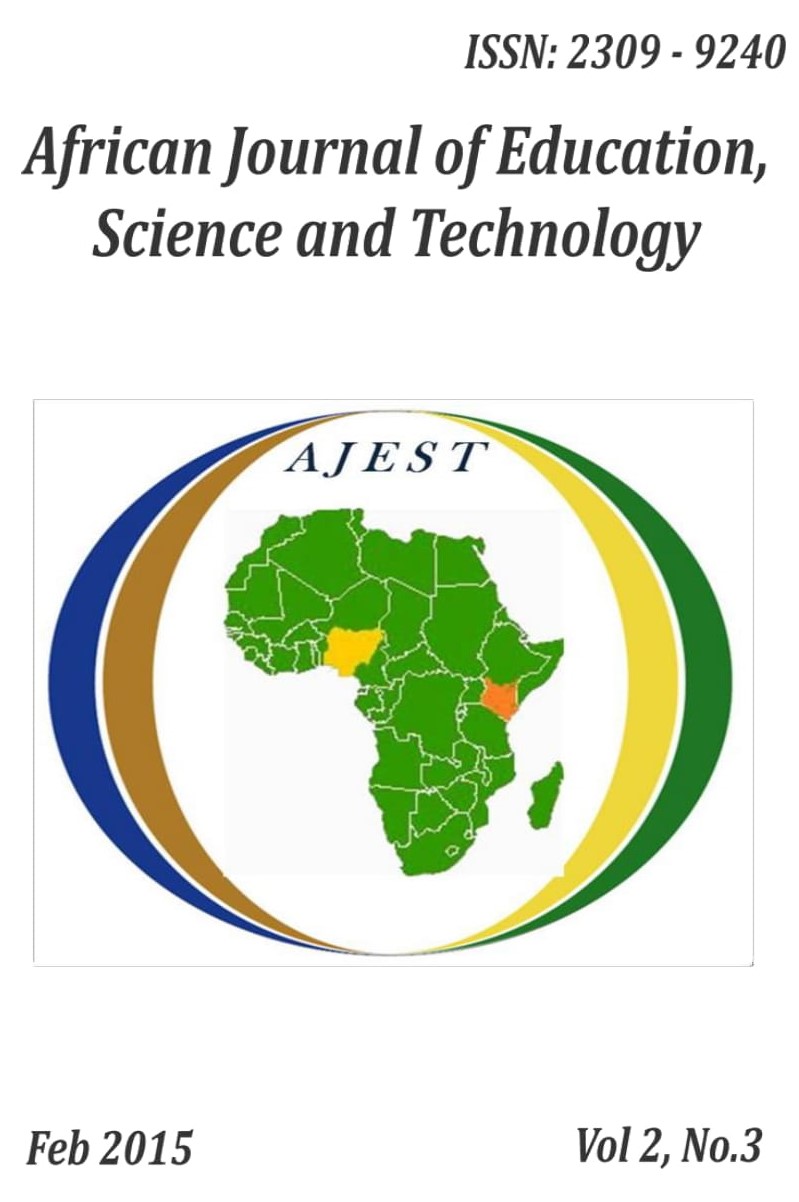An Assessment of Students’ Related Institutional Factors that Contribute to Examination Malpractice in Public Universities: A Case Study of Eldoret West Campus, Moi University, Kenya
##article.abstract##
This study sought to investigate the students‟ perceived institutional factors that contribute to examination malpractices in Eldoret West Campus of Moi University, Uasin Gishu County, Kenya. The study was guided by Albert Bandura‟s social learning theory which asserts that an individual‟s behavior is influenced by the nature of his/her environment. Descriptive research design was used. Simple random, stratified and purposive sampling techniques were used in choosing the sample size. The sample size for the study was one hundred and sixty (160) third year education students. The research instruments used to collect data were questionnaires, interview schedules and document analysis. The analysis of data was done using both qualitative and quantitative statistics with the aid of Statistical Package for Social Sciences (SPSS) and results interpreted using frequencies, means and percentages.
References
Anderson-Levitt, K., Bloch, M., & Soumaré, A. (1998). Inside Classrooms in Guinea: Girls‘ Experiences. In M. Bloch, J. Beoku-Betts, and R. Tabachnick (eds.). Women and Education in Sub-Saharan Africa. Boulder: Lynne Rienner, pp. 99-130.
Beck, G., & Kerry, J. (2009).Glenn Beck‟s Common Sense; the Case against an out-of-Control Government, Inspired by Thomas Paine, Mercury Radio Arts, Inc.
Carroll, J. (2002). A Handbook for Deterring Plagiarism in Higher Education Oxford: The Oxford centre for staff and learning Development, 2002/18.
Fasasi, Y. A. (2009). Quality Asurance: A Practical Solution To Examination Malpractices In Nigerian Secondary Schools. International Journal of African & African-American Studies, 5(2).
Jimoh, B. O., Ebrahim, N. A., Ahmed, S., Taha, Z., Jolly, O., & Aluede, O. (2009). Examination Malpractice In Secondary Schools In Nigeria: What Sustains It?.European Journal of Educational Studies, 1(3), 101-108
Kenya National Examinations Council, KNEC, (2012).Kenya Certificate examination report. Nairobi: Kenya National Examinations Council.
Keter, J. (2012) ―Academic Malpractices Among Undergraduate Students. A Case Study of Moi University‖ Unpublished Thesis, Moi University.
McCabe, D., & Trevino, K. (1993). "Academic Dishonesty: Honor Code and other contextual influences‖, The journal of higher Education,64(5) 532.
Olatoye, R. (2000). Checking The Menace Of Examination Malpractice: A Call For More Teaching And Learning In Schools, Institute of Education, OlabisiOnabanjo University, Ago-Iwoye, Nigeria.
Power, F., Higgins, A., & Kohlberg, L. (1989). Lawrence Kohlberg‟s approach to moral Education: (new
York: Columbia University Press), 214
Roberts, T. S. (2008). Student plagiarism in an online world: Problems and solutions. Information Science Reference.
Rothstein, R., & Jacobsen, R. (2006).The goals of education.Phi Delta Kappan, 88(4), 264-272.
University of Nairobi, UoN.(2014, December).Examinations; Rules and Regulations. Retrieved from http://studentlife.uonbi.ac.ke/node/59
Wilayat, M. (2009).Causes of Examination Malpractice/Unfair Means. Education and Awareness Research.
http:/research-education-edu. blogspot. com/2009/07/examinationmalpractice. htmc.


